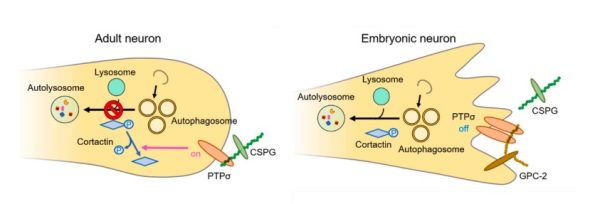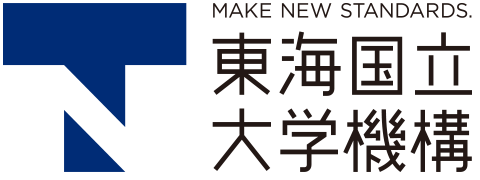A research group led by Assistant Professor Kazuma Sacamoto of the Institute for Glycobiology Core Research (iGCORE) has discovered a new regulation mechanism of neuron axonal formation via proteoglycan.
Axons of terminally differentiated neurons in the mammalian central nervous system (CNS) are unable to regenerate after dissection. One of the mechanisms underlying this is the inhibition of axonal regeneration by chondroitin sulfate (CS) and its neuronal receptor, PTPσ. Our previous results demonstrated that the CS-PTPσ axis disrupted autophagy flux by dephosphorylating cortactin, which led to the formation of dystrophic endballs and to the inhibition of axonal regeneration. In contrast, juvenile neurons vigorously extend axons toward their targets during development and maintain regenerative activity for axons even after injury. Although several intrinsic and extrinsic mechanisms have been reported to mediate the differences, the detailed mechanisms are still elusive. Here, we report that Glypican-2, a member of heparan sulfate proteoglycans (HSPG), which are able to antagonize CS-PTPσ by competing with the receptor, is specifically expressed in the axonal tips of embryonic neurons. Glypican-2 overexpression in adult neurons rescues the dystrophic endball back to a healthy growth cone on the CSPG gradient. Consistently, Glypican-2 restored cortactin phosphorylation in the axonal tips of adult neurons on CSPG. Taken together, our results clearly demonstrated Glypican-2's pivotal role in defining the axonal response to CS and provided a new therapeutic target for axonal injury.

The results were published in "Experimental Neurology", and a Sakamoto's figure appeared on the cover of the journal.
Title: Glypican-2 defines age-dependent axonal response to chondroitin sulfate
DOI: 10.1016/j.expneurol.2023.114444.





